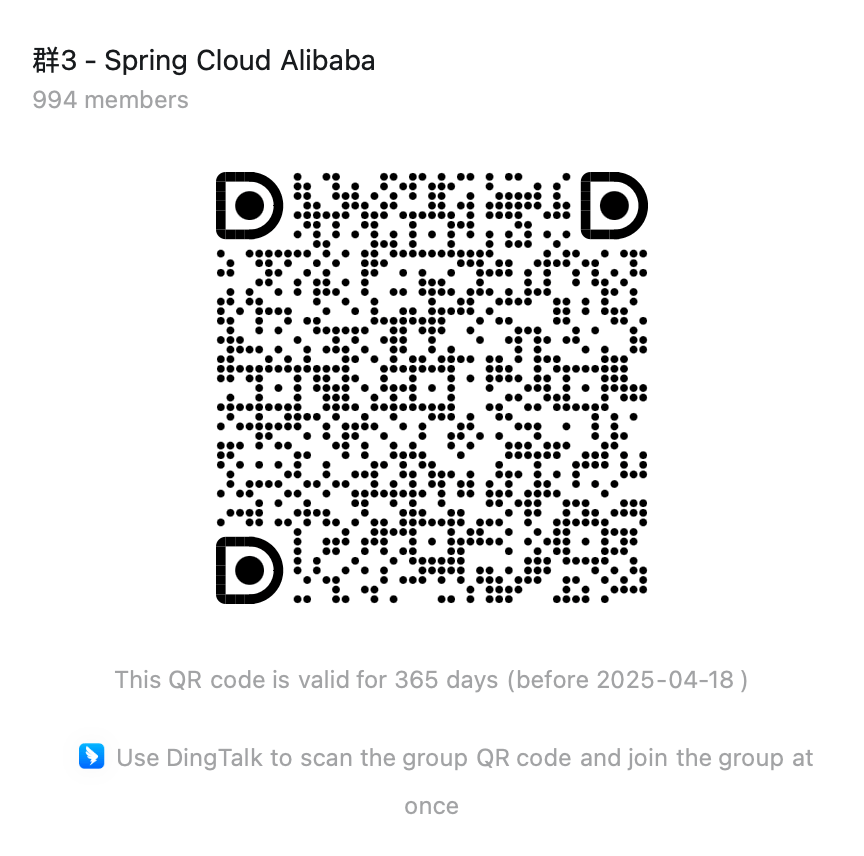Chat Client
ChatClient 简介
ChatClient 提供了与 AI 模型通信的 Fluent API,它支持同步和反应式(Reactive)编程模型。与 ChatModel、Message、ChatMemory 等原子 API 相比,使用 ChatClient 可以将与 LLM 及其他组件交互的复杂性隐藏在背后,因为基于 LLM 的应用程序通常要多个组件协同工作(例如,提示词模板、聊天记忆、LLM Model、输出解析器、RAG 组件:嵌入模型和存储),并且通常涉及多个交互,因此协调它们会让编码变得繁琐。当然使用 ChatModel 等原子 API 可以为应用程序带来更多的灵活性,成本就是您需要编写大量样板代码。
ChatClient 类似于应用程序开发中的服务层,它为应用程序直接提供 AI 服务,开发者可以使用 ChatClient Fluent API 快速完成一整套 AI 交互流程的组装。
包括一些基础功能,如:
- 定制和组装模型的输入(Prompt)
- 格式化解析模型的输出(Structured Output)
- 调整模型交互参数(ChatOptions)
还支持更多高级功能:
- 聊天记忆(Chat Memory)
- 工具/函数调用(Function Calling)
- RAG
创建 ChatClient
使用 ChatClient.Builder 对象创建 ChatClient 实例,您可以自动注入由Spring Boot 自动配置创建的默认 ChatClient.Builder 实例,您也可以通过编程方式自行创建一个 ChatClient.Builder 实例并用它来得到 ChatClient 实例。
使用自动配置的 ChatClient.Builder
在快速开始示例中,就是使用的 Spring Boot 自动装配默认生成的 ChatClient.Builder 的 bean,把它注入到您自己的类中。这里是根据用户提问并从模型得到文本回答的简单例子:
@RestController public class ChatController {
private final ChatClient chatClient;
public ChatController(ChatClient.Builder builder) { this.chatClient = builder.build(); }
@GetMapping("/chat") public String chat(String input) { return this.chatClient.prompt() .user(input) .call() .content(); } }在这个示例中,首先设置了用户消息的内容,call 方法向 AI 模型发送请求,content 方法以字符串形式返回 AI 模型的响应。
以编程方式创建 ChatClient
您可以通过设置属性 spring.ai.chat.client.enabled=false 来禁用 ChatClient.Builder bean 的自动配置,如果需要多个聊天模型一起使用,这会很有用,然后以编程方式创建 ChatClient.Builder,这样可以为每个聊天模型创建一个实例 ChatModel:
ChatModel myChatModel = ... // usually autowired
ChatClient.Builder builder = ChatClient.builder(myChatModel);
// or create a ChatClient with the default builder settings:
ChatClient chatClient = ChatClient.create(myChatModel);处理 ChatClient 响应
ChatClient API 提供了多种方法格式化来自 AI 模型的响应。
返回 ChatResponse
AI 模型的响应是一种由 ChatResponse类型定义的丰富结构。响应类型中包含模型生成的相关元数据信息,同时它还可以包含多个子响应(称为 Generation),每个子响应都有自己的元数据。元数据包括用于创建响应的令牌(token)数量信息(在英文中,每个令牌大约为一个单词的 3/4),了解令牌信息很重要,因为 AI 模型根据每个请求使用的令牌数量收费。
下面的代码段显示了通过调用 chatResponse() 返回 ChatResponse 的示例,相比于调用 content() 方法,这里在调用 call() 方法之后调用 chatResponse()。
ChatResponse chatResponse = chatClient.prompt() .user("Tell me a joke") .call() .chatResponse();返回实体类(Entity)
如果您希望应用接口返回一个预先定义好的实体类型(即完成实体 Bean 的映射),Spring AI Alibaba 框架也提供了将模型响应映射到 Java Bean 的转换,您可以在模型的 call() 方法之后调用entity() 实现。
例如,给定 Java record(POJO)定义:
record ActorFilms(String actor, List<String> movies) { }您可以使用该 entity 方法轻松地将 AI 模型的输出映射到 ActorFilms 类型,如下所示:
ActorFilms actorFilms = chatClient.prompt() .user("Generate the filmography for a random actor.") .call() .entity(ActorFilms.class);entity 还有一种带有参数的重载方法 entity(ParameterizedTypeReference<T> type),可让您指定如泛型 List 等类型:
List<ActorFilms> actorFilms = chatClient.prompt() .user("Generate the filmography of 5 movies for Tom Hanks and Bill Murray.") .call() .entity(new ParameterizedTypeReference<List<ActorFilms>>() { });流式响应
stream 方法是一种异步的、持续获得模型响应的方式:
Flux<String> output = chatClient.prompt() .user("Tell me a joke") .stream() .content();相比于上面的 Flux<String>,您还可以使用 Flux<ChatResponse> chatResponse() 方法获得 ChatResponse 响应数据流。
call() 返回值
ChatClient.call() 方法支持几种不同类型的响应格式。
String content():返回响应的字符串内容ChatResponse chatResponse():返回ChatResponse包含多个 Generation 以及有关响应的元数据的对象。例如,使用了多少个令牌来创建响应。entity返回 Java 类型- entity(ParameterizedTypeReference
type):用于返回实体类型的集合。 - entity(Class
type): 用于返回特定的实体类型。 - entity(StructuredOutputConverter
structuredOutputConverter): 用于指定一个实例 StructuredOutputConverter,将String转换为实体类型。
- entity(ParameterizedTypeReference
stream() 返回值
您还可以调用 stream() 方法来获得模型的响应,而不是只使用 call() 方法,strem() 方法的响应类型有以下几种选项:
Flux<String> content():返回由 AI 模型生成的Flux<String>对象。Flux<ChatResponse> chatResponse():返回Flux<ChatResponse>对象,其中包含模型相应的元数据和其他信息。
自定义 ChatClient 默认值
在前面 ChatClient 的初步体验中,我们使用 ChatClient.Builder.build() 快速创建了一个 ChatClient 实例,开发者还可以使用 ChatClient.Builder 来自定义 ChatClient 实例的相关属性。
注意:创建 ChatClient 时指定的配置将作为与模型交互时的默认参数,这样可以避免每次调用都重复设置。
设置默认 System Message
在以下示例中,我们为 ChatClient 设置了一个默认的 system message(以海盗风格回答所有问题)。当 ChatClient 与模型交互时都会自动携带这条 system message,用户只需要指定 user message 即可。
@Configurationclass Config {
@Bean ChatClient chatClient(ChatClient.Builder builder) { return builder.defaultSystem("You are a friendly chat bot that answers question in the voice of a Pirate") .build(); }
}在 Controller 中使用自定义的 ChatClient 实例:
@RestControllerclass AIController {
private final ChatClient chatClient;
AIController(ChatClient chatClient) { this.chatClient = chatClient; }
@GetMapping("/ai/simple") public Map<String, String> completion(@RequestParam(value = "message", defaultValue = "Tell me a joke") String message) { return Map.of("completion", chatClient.prompt().user(message).call().content()); }}启动示例,通过 curl 测试效果:
> curl localhost:8080/ai/simple
{"generation":"Why did the pirate go to the comedy club? To hear some arrr-rated jokes! Arrr, matey!"}在上面 builder.defaultSystem() 创建 ChatClient 时。我们还可以选择使用 Prompt 模板,类似 “You are a friendly chat bot that answers question in the voice of a {voice}“,这让我们有机会在每次调用前修改请求参数。
@Configurationclass Config {
@Bean ChatClient chatClient(ChatClient.Builder builder) { return builder.defaultSystem("You are a friendly chat bot that answers question in the voice of a {voice}") .build(); }
}
@RestControllerclass AIController { private final ChatClient chatClient AIController(ChatClient chatClient) { this.chatClient = chatClient; } @GetMapping("/ai") Map<String, String> completion(@RequestParam(value = "message", defaultValue = "Tell me a joke") String message, String voice) { return Map.of( "completion", chatClient.prompt() .system(sp -> sp.param("voice", voice)) .user(message) .call() .content()); }}答案是:
http localhost:8080/ai voice=='Robert DeNiro'
{ "completion": "You talkin' to me? Okay, here's a joke for ya: Why couldn't the bicycle stand up by itself? Because it was two tired! Classic, right?"}其他默认设置
除了 defaultSystem 之外,您还可以在 ChatClient.Builder 中指定其他默认提示词。
-
defaultOptions(ChatOptions chatOptions):传入ChatOptions类中定义的可移植选项或特定于模型实现的如DashScopeChatOptions选项。有关特定于模型的ChatOptions实现的更多信息,请参阅 JavaDocs。 -
defaultFunction(String name, String description, java.util.function.Function<I, O> function):name用于在用户文本中引用该函数,description解释该函数的用途并帮助 AI 模型选择正确的函数以获得准确的响应,参数function是模型将在必要时执行的 Java 函数实例。 -
defaultFunctions(String... functionNames):应用程序上下文中定义的 java.util.Function 的 bean 名称。 -
defaultUser(String text)、defaultUser(Resource text)、defaultUser(Consumer<UserSpec> userSpecConsumer)这些方法允许您定义用户消息输入,Consumer<UserSpec>允许您使用 lambda 指定用户消息输入和任何默认参数。 -
defaultAdvisors(RequestResponseAdvisor... advisor):Advisors 允许修改用于创建Prompt的数据,QuestionAnswerAdvisor实现通过在 Prompt 中附加与用户文本相关的上下文信息来实现Retrieval Augmented Generation模式。 -
defaultAdvisors(Consumer<AdvisorSpec> advisorSpecConsumer):此方法允许您定义一个Consumer并使用AdvisorSpec配置多个 Advisor,Advisor 可以修改用于创建Prompt的最终数据,Consumer<AdvisorSpec>允许您指定 lambda 来添加 Advisor 例如QuestionAnswerAdvisor。
您可以在运行时使用 ChatClient 提供的不带 default 前缀的相应方法覆盖这些默认值。
-
options(ChatOptions chatOptions) -
function(String name, String description, java.util.function.Function<I, O> function) -
functions(String... functionNames) -
user(String text)、user(Resource text)、user(Consumer<UserSpec> userSpecConsumer) -
advisors(RequestResponseAdvisor... advisor) -
advisors(Consumer<AdvisorSpec> advisorSpecConsumer)
Advisors
在使用用户输入文本构建 Prompt 调用 AI 模型时。一个常见模式是使用上下文数据附加或扩充 Prompt,最终使用扩充后的 Prompt 与模型交互。
这些用于扩充 Prompt 的上下文数据可以是不同类型的,常见类型包括:
- 您自己的数据:这是 AI 模型尚未训练过的数据,如特定领域知识、产品文档等,即使模型已经看到过类似的数据,附加的上下文数据也会优先生成响应。
- 对话历史记录:聊天模型的 API 是无状态的,如果您告诉 AI 模型您的姓名,它不会在后续交互中记住它,每次请求都必须发送对话历史记录,以确保在生成响应时考虑到先前的交互。
检索增强生成(RAG)
向量数据库存储的是 AI 模型不知道的数据,当用户问题被发送到 AI 模型时,QuestionAnswerAdvisor 会在向量数据库中查询与用户问题相关的文档。
来自向量数据库的响应被附加到用户消息 Prompt 中,为 AI 模型生成响应提供上下文。
假设您已将数据加载到中 VectorStore,则可以通过向 ChatClient 提供 QuestionAnswerAdvisor 实例来执行检索增强生成 (RAG ) 。
ChatResponse response = ChatClient.builder(chatModel) .build().prompt() .advisors(new QuestionAnswerAdvisor(vectorStore, SearchRequest.defaults())) .user(userText) .call() .chatResponse();在此示例中,SearchRequest.defaults() 将对 Vector 向量数据库中的所有文档执行相似性搜索。为了限制要搜索的文档类型,SearchRequest 采用了可移植到任意向量数据库中的类似 SQL 筛选表达式。
动态过滤表达式
SearchRequest 使用 FILTER_EXPRESSION Advisor 上下文参数在运行时更新过滤表达式:
ChatClient chatClient = ChatClient.builder(chatModel) .defaultAdvisors(new QuestionAnswerAdvisor(vectorStore, SearchRequest.defaults())) .build();
// Update filter expression at runtimeString content = chatClient.prompt() .user("Please answer my question XYZ") .advisors(a -> a.param(QuestionAnswerAdvisor.FILTER_EXPRESSION, "type == 'Spring'")) .call() .content();该 FILTER_EXPRESSION 参数允许您根据提供的表达式动态过滤搜索结果。
聊天记忆
ChatMemory 接口表示聊天对话历史记录的存储,它提供向对话添加消息、从对话中检索消息以及清除对话历史记录的方法。
目前提供两种实现方式 InMemoryChatMemory、CassandraChatMemory,分别为聊天对话历史记录提供内存存储和 time-to-live 类型的持久存储。
创建一个包含 time-to-live 配置的 CassandraChatMemory
CassandraChatMemory.create(CassandraChatMemoryConfig.builder().withTimeToLive(Duration.ofDays(1)).build());以下 Advisor 实现使用 ChatMemory 接口来使用对话历史记录来增强(advice)Prompt,这些 advisor 实现在如何将对话历史记录添加到 Prompt 的细节上有所不同。
MessageChatMemoryAdvisor:内存被检索并作为消息集合添加到提示中PromptChatMemoryAdvisor:检索内存并将其添加到提示的系统文本中。VectorStoreChatMemoryAdvisor:构造函数VectorStoreChatMemoryAdvisor(VectorStore vectorStore, String defaultConversationId, int chatHistoryWindowSize)允许您指定要从中检索聊天历史记录的 VectorStore、唯一的对话 ID、要检索的聊天历史记录的大小(以令牌大小为单位)。
下面的 @Service 提供了一个使用多个 Advisor 的示例实现:
import static org.springframework.ai.chat.client.advisor.AbstractChatMemoryAdvisor.CHAT_MEMORY_CONVERSATION_ID_KEY;import static org.springframework.ai.chat.client.advisor.AbstractChatMemoryAdvisor.CHAT_MEMORY_RETRIEVE_SIZE_KEY;
@Servicepublic class CustomerSupportAssistant {
private final ChatClient chatClient;
public CustomerSupportAssistant(ChatClient.Builder builder, VectorStore vectorStore, ChatMemory chatMemory) {
this.chatClient = builder .defaultSystem(""" You are a customer chat support agent of an airline named "Funnair".", Respond in a friendly, helpful, and joyful manner.
Before providing information about a booking or cancelling a booking, you MUST always get the following information from the user: booking number, customer first name and last name.
Before changing a booking you MUST ensure it is permitted by the terms.
If there is a charge for the change, you MUST ask the user to consent before proceeding. """) .defaultAdvisors( new PromptChatMemoryAdvisor(chatMemory), // new MessageChatMemoryAdvisor(chatMemory), // CHAT MEMORY new QuestionAnswerAdvisor(vectorStore, SearchRequest.defaults()), new LoggingAdvisor()) // RAG .defaultFunctions("getBookingDetails", "changeBooking", "cancelBooking") // FUNCTION CALLING .build();}
public Flux<String> chat(String chatId, String userMessageContent) {
return this.chatClient.prompt() .user(userMessageContent) .advisors(a -> a .param(CHAT_MEMORY_CONVERSATION_ID_KEY, chatId) .param(CHAT_MEMORY_RETRIEVE_SIZE_KEY, 100)) .stream().content(); }}日志记录
SimpleLoggerAdvisor 是一个用于记录 ChatClient 的 request 和 response 数据 Advisor,这对于调试和监控您的 AI 交互非常有用。
要启用日志记录,请在创建 ChatClient 时将 SimpleLoggerAdvisor 添加到 Advisor 链中。建议将其添加到链的末尾:
ChatResponse response = ChatClient.create(chatModel).prompt() .advisors(new SimpleLoggerAdvisor()) .user("Tell me a joke?") .call() .chatResponse();要查看日志,请将 Advisor 包的日志记录级别设置为 DEBUG:
org.springframework.ai.chat.client.advisor=DEBUG将其添加到您的 application.properties 或 application.yaml 文件中。
您可以使用以下构造函数自定义如何使用 SimpleLoggerAdvisor 记录来自 AdvisedRequest 和 ChatResponse 的数据:
SimpleLoggerAdvisor( Function<AdvisedRequest, String> requestToString, Function<ChatResponse, String> responseToString)使用示例:
javaCopySimpleLoggerAdvisor customLogger = new SimpleLoggerAdvisor( request -> "Custom request: " + request.userText, response -> "Custom response: " + response.getResult());这使得您可以根据您的特定需求定制需要记录的信息。



